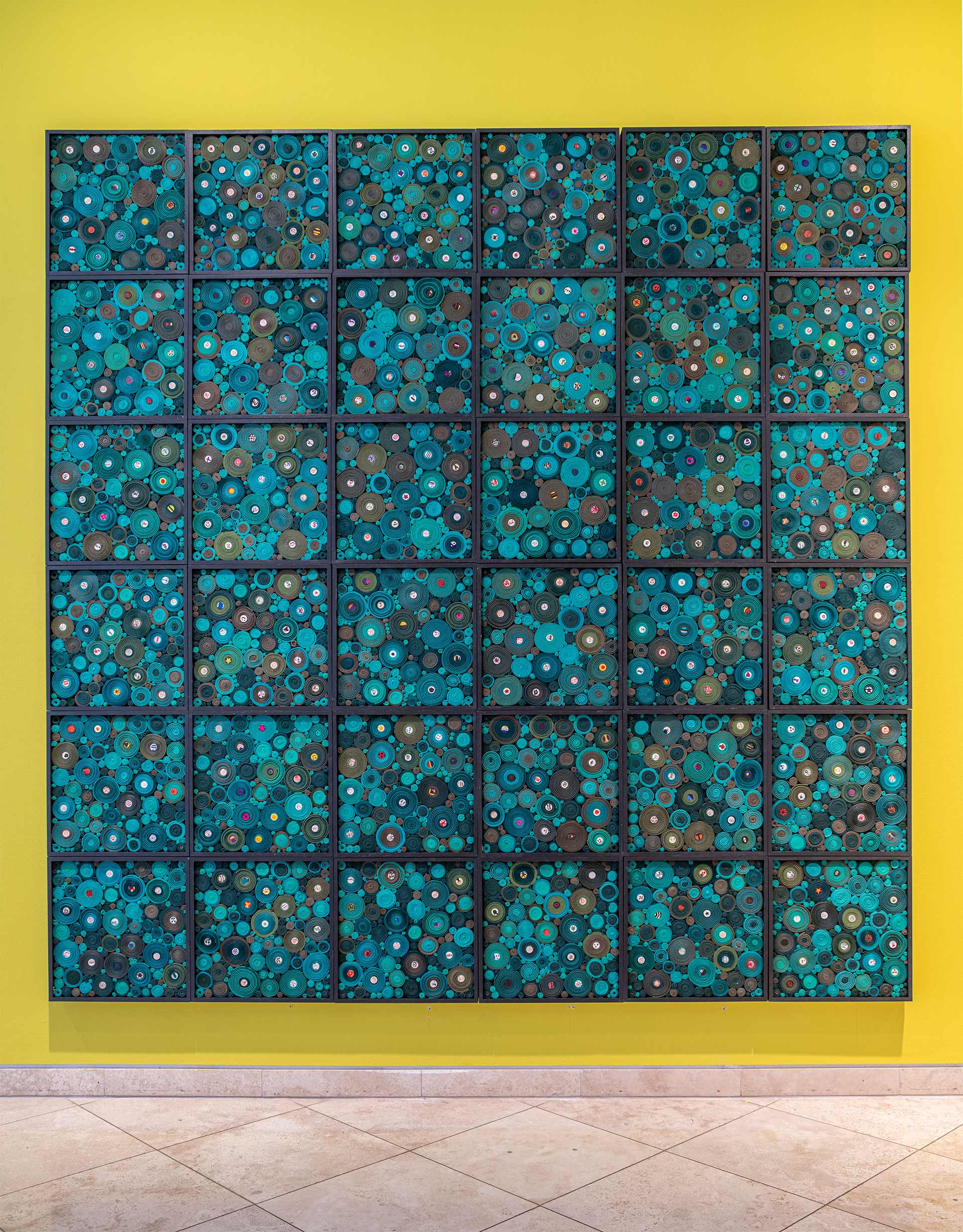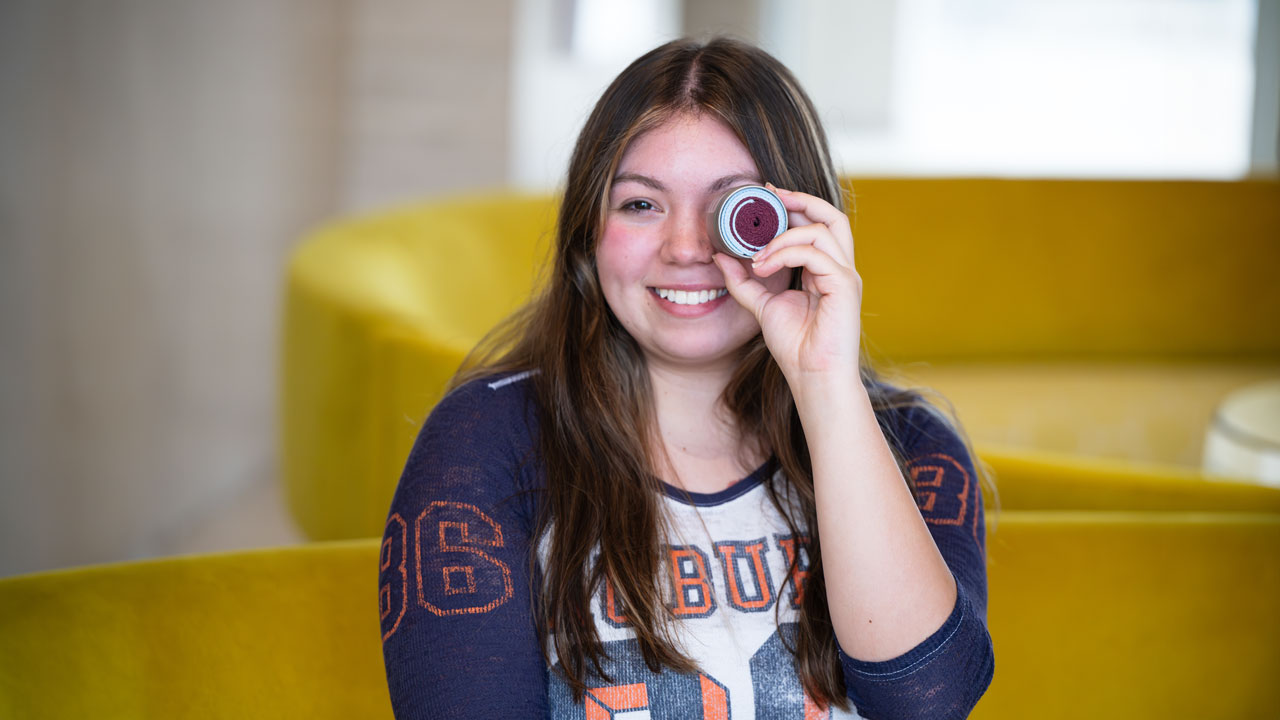content body
Thirty participants buzz about the lobby of The Jule Collins Smith Museum of Fine Art at Auburn University when the faint sound of rhythmic clapping begins to build. What they are about to take part in is unlike any museum experience most would imagine. A steady chant lands between the claps, reaching a crescendo: Welcome! Welcome! Welcome to the Scrollathon!
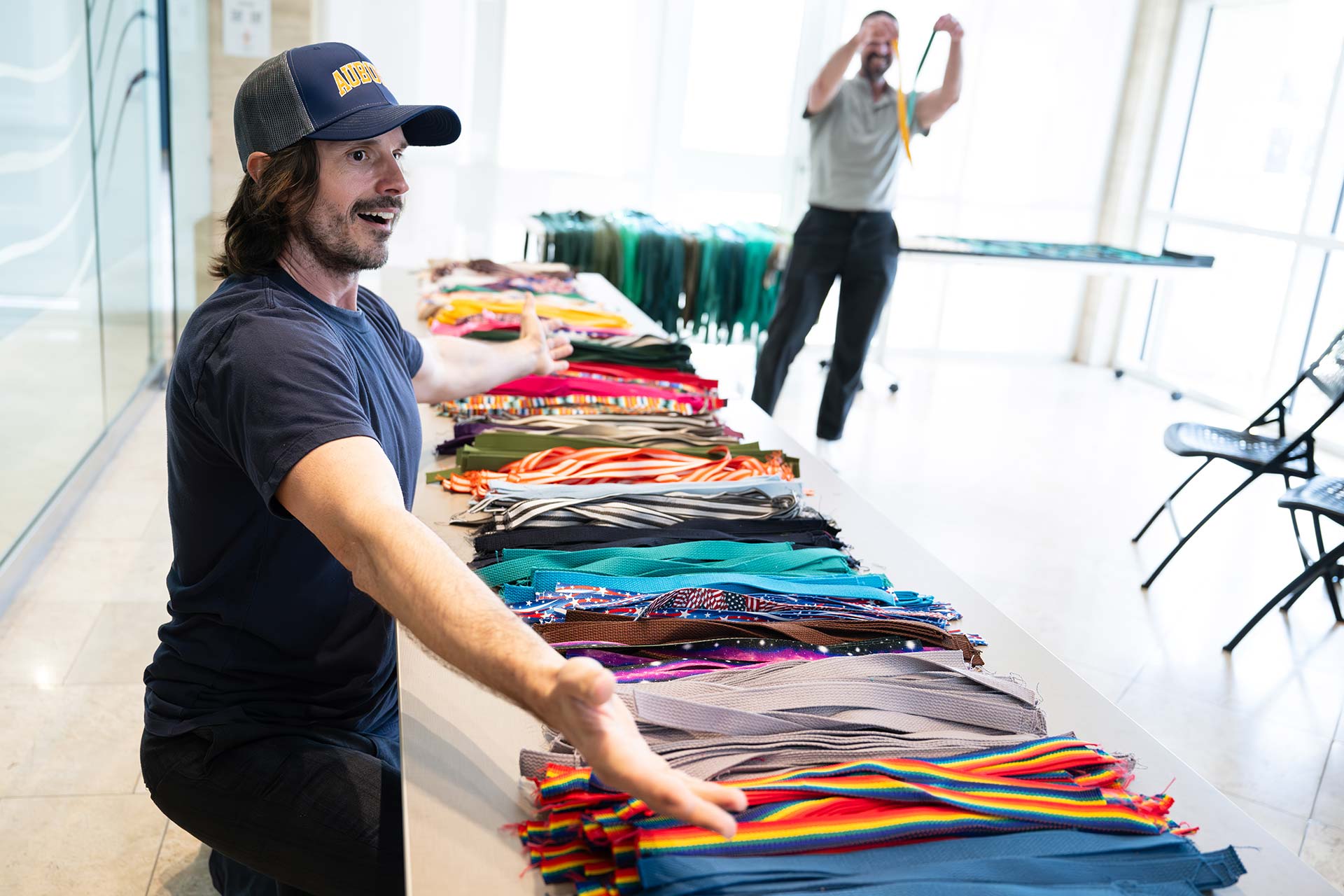
Doors open to a makeshift art studio as the guests file in and find a seat, passing tables lined with colorful fabric trimmings. From there, the energy explodes as brothers and award-winning artists Steven and William Ladd compassionately and humorously command the room for a solid hour. Welcome to the National Scrollathon—part pep rally, part hands-on workshop, yet entirely an expression of individual creativity celebrating the power of story and community. The countrywide visual arts project aims to unite Americans to celebrate the country’s 250th Birthday. Thousands of groups like this one from all 50 states and U.S. territories will create a collaborative artwork for an exhibition at the Kennedy Center in Washington, DC in 2026.
In March, Auburn’s art museum hosted the Alabama edition of the National Scrollathon. In a series of hour-long workshops over five days, approximately 450 community members with and without prior art-making experience rolled strips of fabric into scrolls. Each participant contributed one scroll to an eight-by-eight-foot collage that will represent Alabama at the Kennedy Center, while they kept the other scroll to commemorate the event. Invited groups were of all ages, ethnicities, abilities and socioeconomic backgrounds. Since 2006, the Ladds and their team have worked with more than 17,000 community artists to blend fine and conceptual art with hands-on educational collaboration.
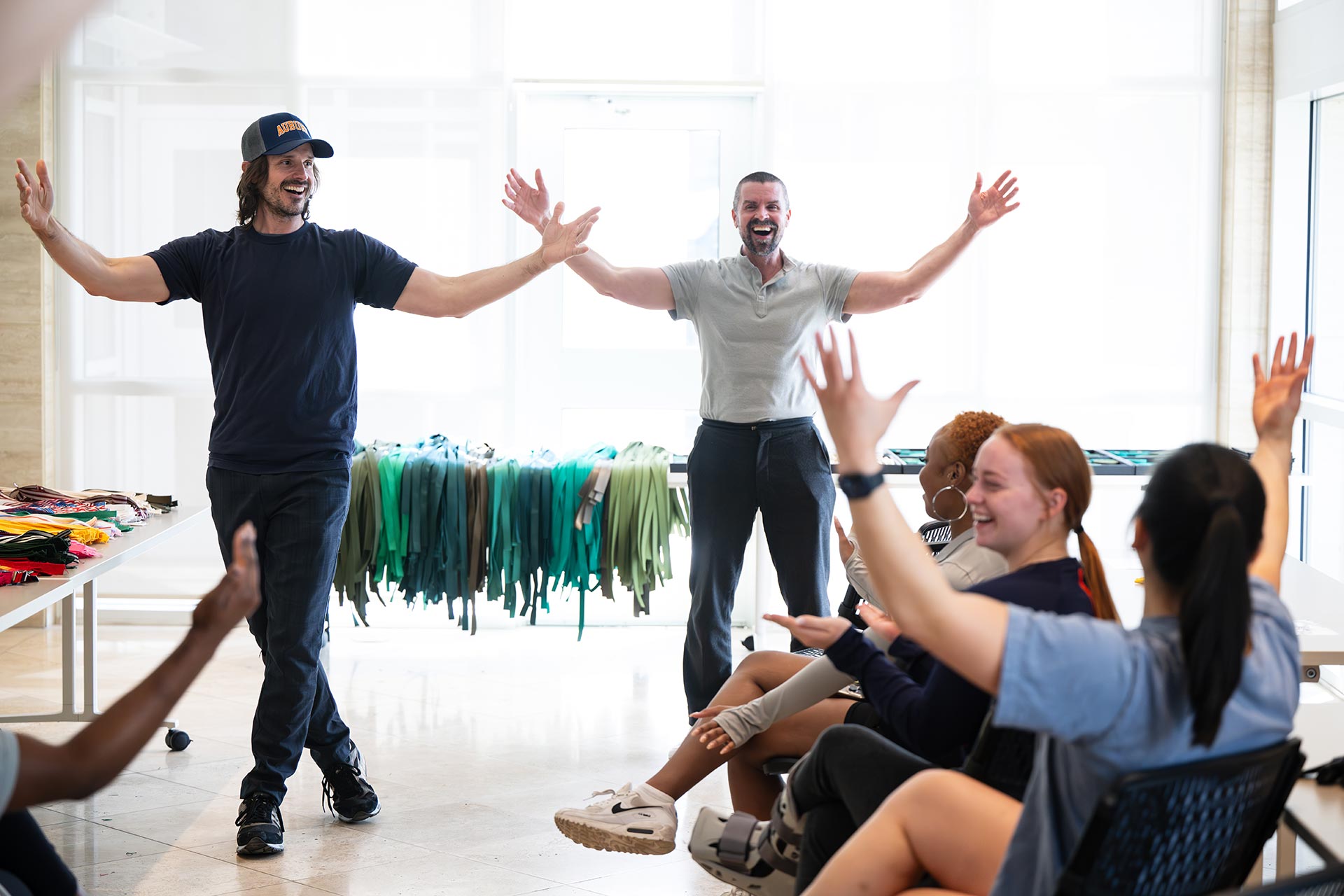
SPEND YOUR LIFE DOING WHAT YOU LOVE
“Beads!” shouts William, appropriately wearing an Auburn baseball cap. “I love beads!” He describes his self-proclaimed obsession with the medium as his brother Steven chimes in with his affinity for textiles and design, telling the audience about their shared journey to New York City, where they have partnered for decades to launch Scrollathon, among other projects. The brothers share the three tenets they live by with the group.
“Number one! Spend your life doing what you love,” William tells the audience, crediting his parents, who encouraged him to pursue his dreams. “Number two! Be focused and disciplined,” adds Steven, who once worked at a gas station and recalled his dad’s advice to give his all, no matter the task. “And number three, to collaborate, which is what we will do with you today.”
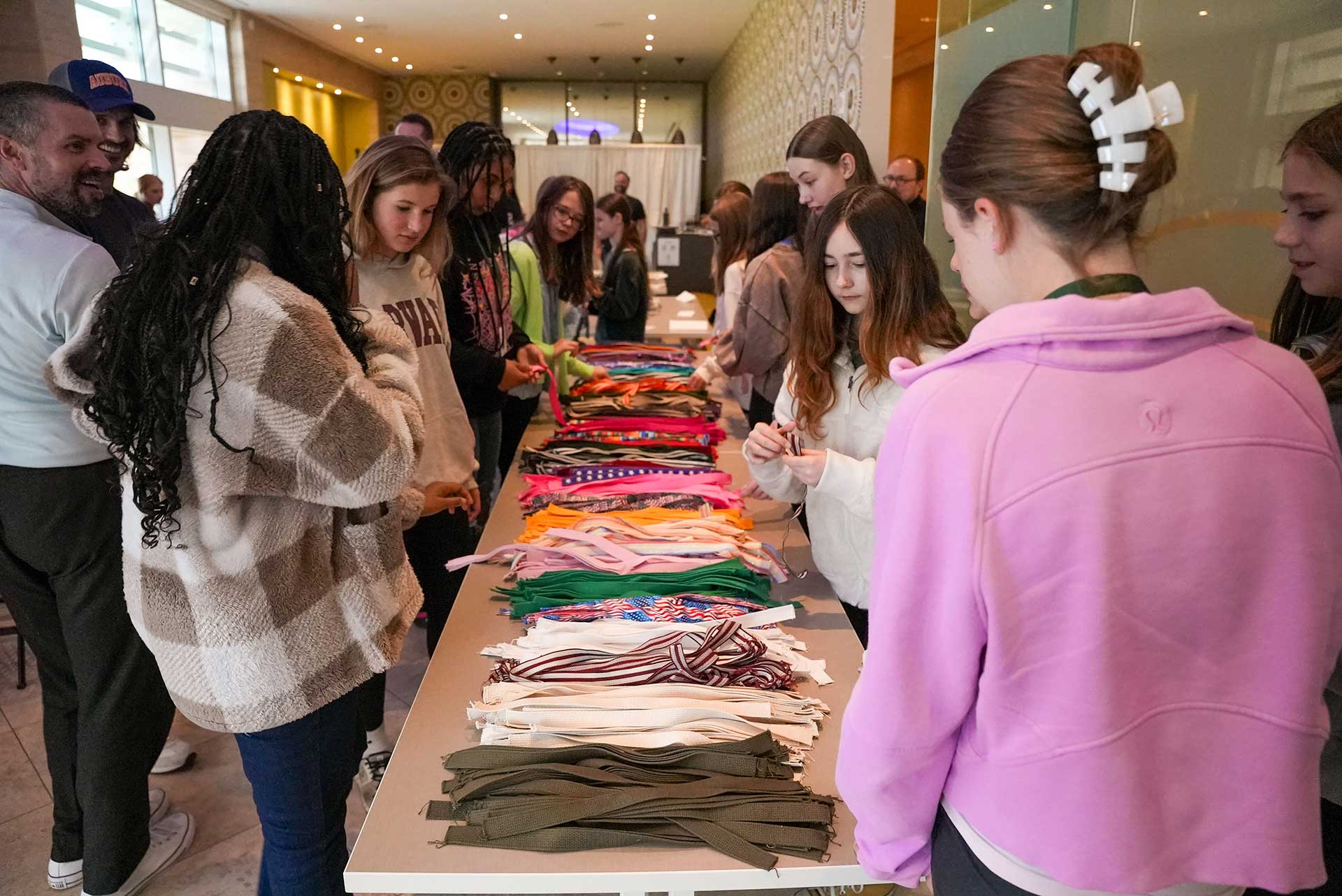
EVERYONE'S VOICE FELT WELCOME
The audience first creates a personal scroll made of two-colored fabric strips of their choosing that are rolled together and pinned, titled, signed and placed in a souvenir tin. “Think about your life story,” Steven said, demonstrating the simple act of scrolling and providing inspiration. The Ladds warmly welcome volunteers to the front to share the title, why they picked their shades and patterns and what they mean to them. For some, the objects represent a lighter side, from obsessions with outer space to the peace gained from eight solid hours of sleep. Scrolls also serve as memorials to loved ones, support social causes and personal beliefs, and acknowledge obstacles they have overcome.
Visual arts educator Tricia Oliver teaches seventh grade at East Samford School in Auburn and said her students loved the experience. “Everyone’s voice felt welcome,” she said, adding that the Scrollathon provided an opportunity for authentic interaction and a safe space for peers to see similarities and differences.
“I hope those more profound stories touched the hearts of those in the room enough to say, we're all human, and I have a voice,” she said. “Isn't that what art is about? Giving a voice to an idea, a thought, a hope, a conviction, a history, a story that needs to be shared?”
“Your stories are what make up this country. We want you to take an active role in creating what that future can be."
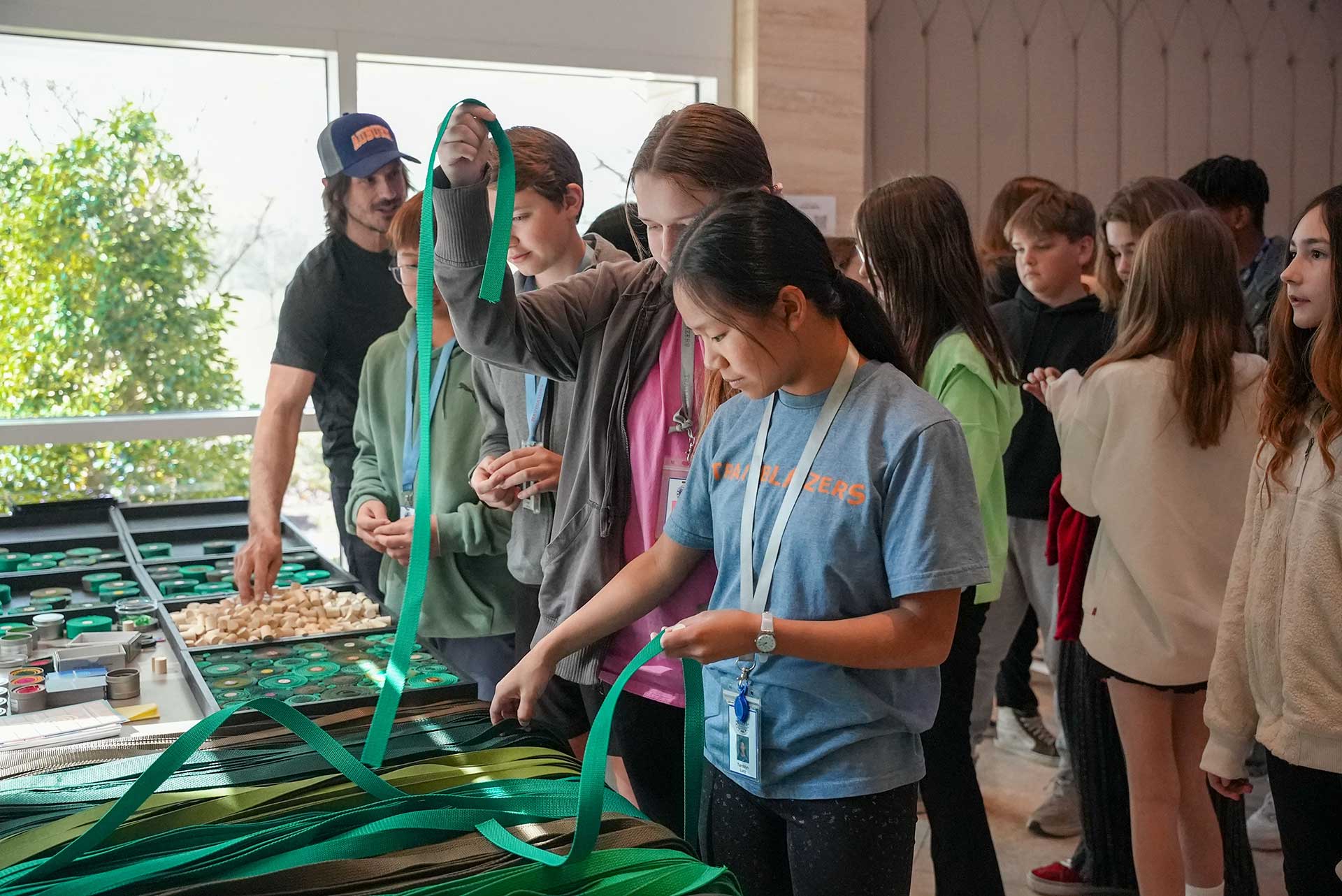
The artists then focus on the second scroll, symbolizing the state. Trimmings span shades of green, ranging from mint to lime to emerald, a nod to Alabama’s timber industry, its national forests and growth in sustainability.
“We value your stories,” said Steven. “Your stories are what make up this country. We want you to take an active role in creating what that future can be.”
Participants again select two shades from the green piles and wind the strips around a small wooden dowel. This time, intention is turned toward the nation and observing 250 years since the ratification of the Declaration of Independence. The wooden centers are personalized with initials, small drawings and messages.
Each community artist is photographed, with those images assembled in a mural to accompany the piece when on view. Video interviews with select attendees provide oral histories for a multimedia display. “When people see this piece, they are going to see individuals who look like them,” Steven commented. “That might not always be the case.”
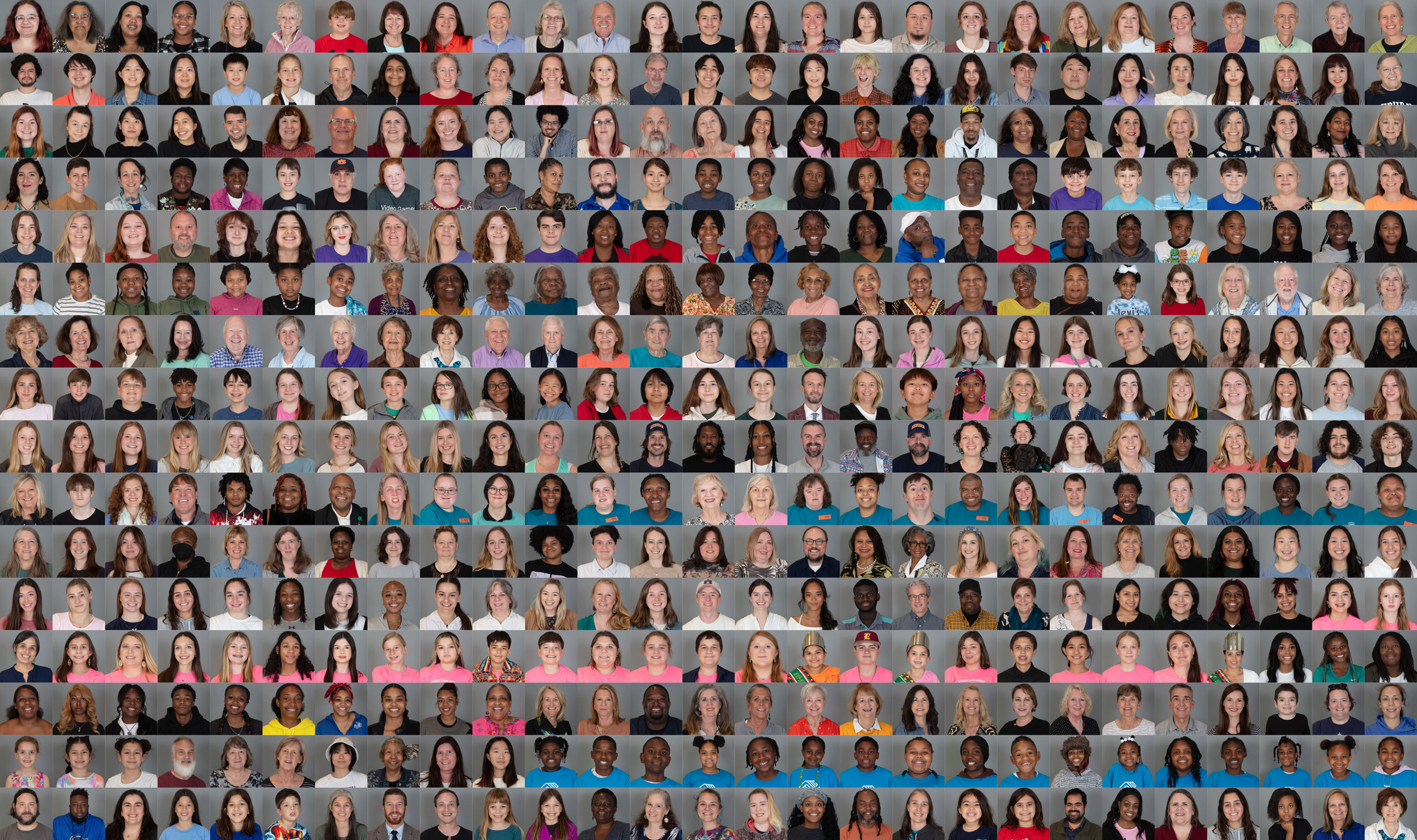
“The Ladds titled the piece ‘Made for More,’ and we installed the collage at the museum. The composition represents our community and state with such joy. No two scrolls are alike—even though they used similar materials.” said museum executive director Cindi Malinick. “Before the piece is loaned to the Kennedy Center, we hope to collaborate with other university entities to install ‘Made for More’ in campus spaces so that students, faculty and staff can experience the impact of this art on the way to class and work.”
“Steven and William Ladd have found a simple yet engaging way to celebrate how we are connected in our humanity,” Oliver said. “I am thankful we were a part of the big story.”
